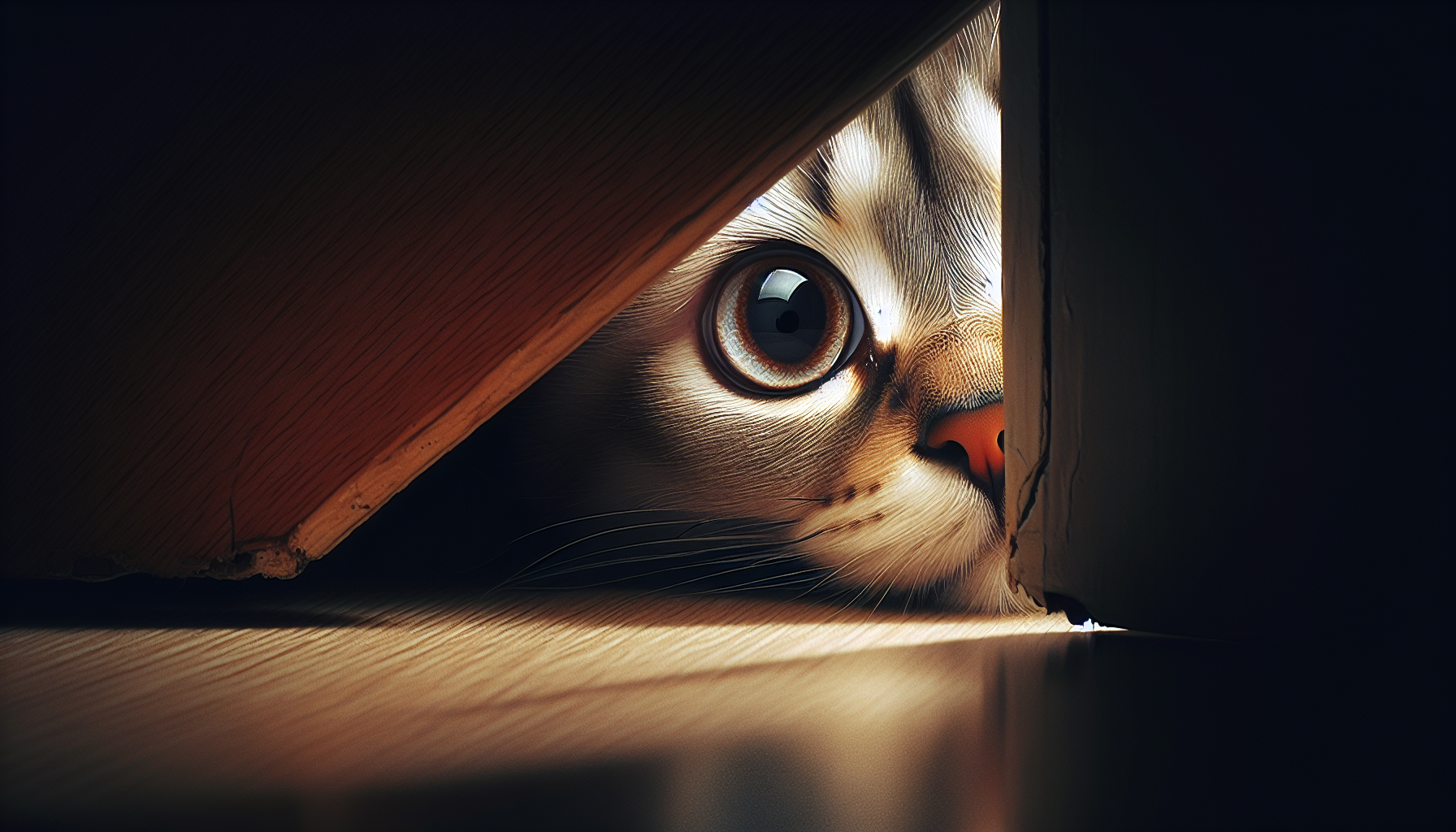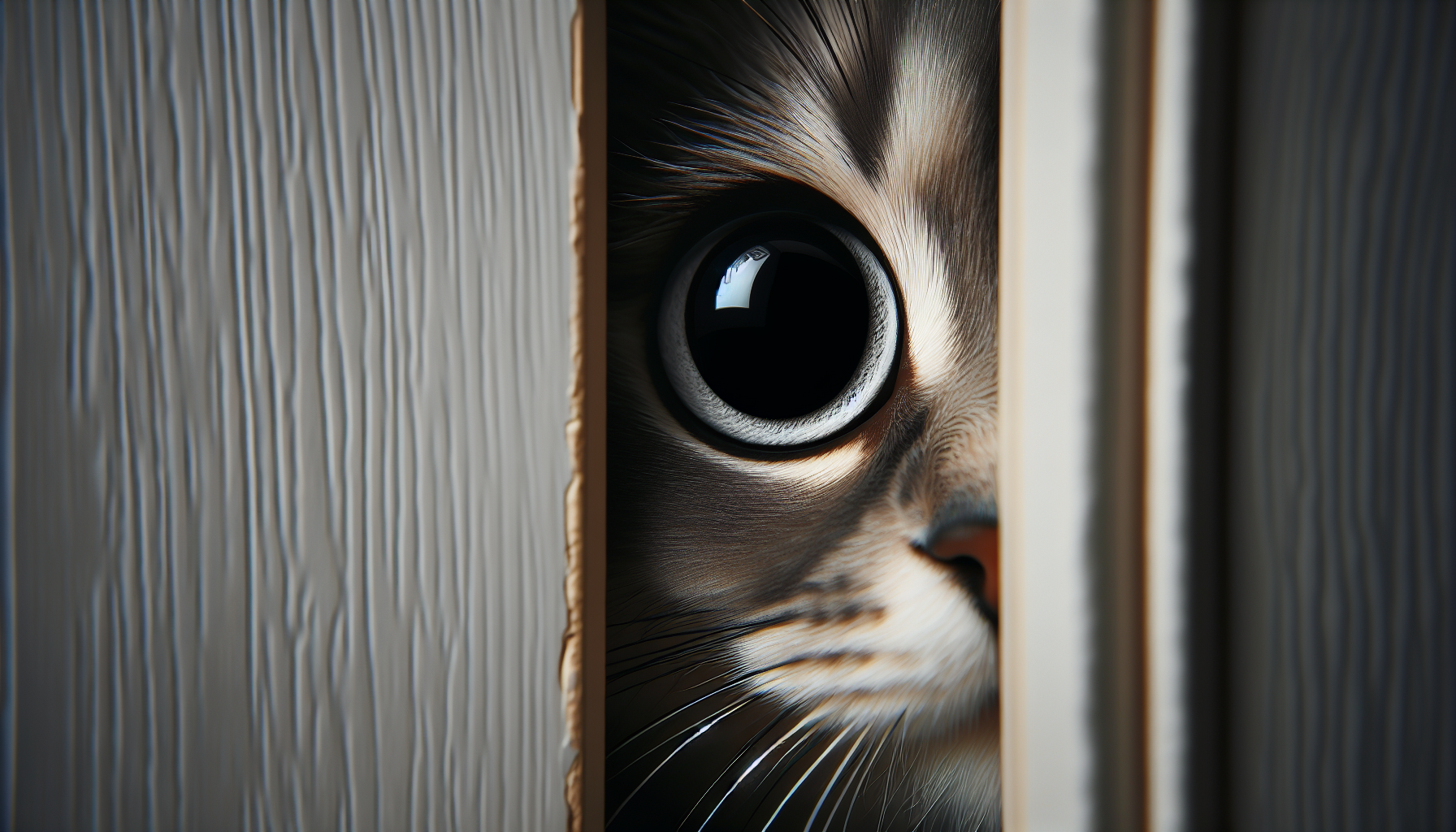Cats, the mysterious and independent creatures that they are, can also be susceptible to stress. But how can you tell when your feline friend is feeling overwhelmed? In this article, we will explore some common signs of stress in cats that every cat owner should be aware of. From changes in behavior to physical symptoms, understanding these subtle cues can help you provide the support and care your furry companion needs. So, grab a cup of tea, sit back, and let’s dive into the fascinating world of cat stress.

Physical Signs of Stress
When cats experience stress, it often manifests in various physical signs that are visible to their owners. One of the most common signs is a change in appetite. Some cats may suddenly lose interest in food and experience a decreased appetite, while others may turn to overeating and gain weight. These changes in appetite can be indicative of underlying stress or anxiety in cats.
Another physical sign of stress is increased sleeping. A stressed cat may retreat to sleeping more often than usual, seeking solace and comfort in rest. This excessive sleeping can be a way for cats to cope with their stressors and escape from the outside world momentarily.
Excessive grooming is another physical sign of stress in cats. When cats are stressed, they may obsessively groom themselves in an attempt to self-soothe. This excessive grooming can lead to hair loss, as the constant licking and biting can cause damage to their fur and skin.
Hair loss itself is also a physical sign of stress in cats. Stress-induced hair loss, commonly known as alopecia, can occur in patches or throughout the cat’s body. This hair loss can result from both excessive grooming and hormonal changes caused by stress.
Behavioral Changes
Stress in cats can also manifest in various behavioral changes that may be noticeable to their owners. One common behavioral sign of stress is aggression. Stressed cats may become more irritable and prone to aggressive behavior, such as hissing, growling, swatting, or even biting. These aggressive outbursts are often a result of their heightened state of anxiety.
Excessive vocalization is another behavioral sign of stress in cats. Stressed cats may meow or howl excessively, often using a loud and intense tone. This excessive vocalization can be their way of expressing their discomfort or seeking attention from their owners.
Surprisingly, stress in cats can also lead to withdrawal. Some stressed cats may retreat and isolate themselves from social interaction, preferring to spend time alone in secluded areas of the house. This withdrawal can be a defense mechanism that cats use to cope with their stressors.
Inappropriate elimination is another behavioral change commonly associated with stress in cats. Stressed cats may urinate or defecate outside their litter box, often on carpets or other inappropriate surfaces. This behavior can be frustrating for owners, but it is important to understand that it is often a result of stress or anxiety.
Increased scratching is yet another behavioral sign of stress in cats. Stressed cats may scratch excessively, targeting furniture, carpets, or even their own bodies. This behavior serves as a way for them to release pent-up energy and attempt to alleviate their stress.
Changes in Social Interaction
Stress in cats can also impact their social interaction with both humans and other pets in the household. One common sign of stress is avoidance or hiding. Stressed cats may try to escape from potentially stressful situations or environments by hiding in secluded areas of the house, such as under the bed or in closets. They may also avoid direct eye contact or interaction with their owners during these times.
Another social behavior that may change due to stress is reduced playfulness. Cats that are stressed often lose interest in engaging in their usual playtime activities. They may show disinterest in toys, lose their enthusiasm for interactive play, or simply become less active overall. This change in playfulness is a telling sign that something is amiss in their mental wellbeing.
A lack of interest in previously enjoyed activities is another social sign of stress in cats. Cats that were once enthusiastic about activities like sitting on the windowsill, exploring new areas, or even cuddling with their owners may suddenly lose interest in these activities. This shift in behavior may indicate that they are feeling overwhelmed or stressed and need some extra care and attention.

Physical Health Issues
The stress that cats experience can also lead to various physical health issues. One common health issue associated with stress is frequent urinary tract infections (UTIs). Stress can compromise a cat’s immune system, making them more susceptible to infections in their urinary tract. UTIs can cause discomfort, pain, and frequent urination in cats, leading to their overall distress.
Digestive problems are another physical health issue that can arise due to stress. Stress disrupts a cat’s digestive system, leading to diarrhea, constipation, or even vomiting. These gastrointestinal issues can be distressing for both the cat and its owner and may require veterinary attention to alleviate the symptoms and manage the underlying stress.
Stress can also manifest as various skin conditions in cats. Dermatitis, excessive scratching, or even allergic reactions can occur as a result of stress-induced responses in their body. Skin conditions can be uncomfortable and irritating for cats, further adding to their overall stress levels.
Changes in Litter Box Behavior
Stress in cats often affects their litter box behavior, which can be noticeable to their owners. One common change is having accidents outside the litter box. Stressed cats may urinate or defecate in inappropriate areas of the house, such as on carpets or rugs. This behavior can be a cry for help or an indication that they are feeling overwhelmed and unable to properly use their litter box.
On the other hand, some stressed cats may refuse to use the litter box altogether. They may actively avoid it or find alternative spots to relieve themselves, which can be frustrating for owners to deal with. This behavior highlights their discomfort and unease, requiring attention and support to address their stress.
In some cases, stress may cause cats to exhibit increased frequency of using the litter box. They may make multiple trips to the litter box in a short period, potentially due to increased anxiety or an overactive bladder. This behavior can serve as a clear indicator that stress is affecting their urinary system and overall wellbeing.
Changes in Vocalization
Stressed cats often exhibit changes in their vocalization, which can be concerning for their owners. One common sign is excessive meowing or howling. Stressed cats may vocalize loudly and persistently, expressing their anxiety or frustration. This excessive vocalization can be a plea for attention or a way to release their pent-up emotions.
On the contrary, some stressed cats may become unusually silent and display prolonged periods of silence. They may refrain from meowing altogether or significantly reduce their vocalization. This change in vocalization can be a sign that they are feeling overwhelmed or drained, choosing silence as a coping mechanism.
Stress may also influence the pitch or tone of a cat’s meowing. They may produce sounds that are different from their usual meows, sounding more strained, agitated, or even distressed. These unusual vocalizations can indicate their discomfort and the need for their owners’ support in relieving their stress.
Changes in Eating Habits
Stress can have a significant impact on a cat’s eating habits, leading to noticeable changes in their behavior around food. One common sign is a loss of appetite. Stressed cats may suddenly show disinterest in their meals, leading to a decrease in food consumption. This loss of appetite can result from their heightened stress levels, affecting their overall well-being.
On the other hand, stress can also cause cats to engage in overeating. Some stressed cats find comfort in food, resulting in excessive eating habits. They may consume more food than usual, potentially leading to weight gain or obesity if not managed effectively.
Another change in eating habits due to stress is selective eating. Stressed cats may become picky eaters, showing a preference for certain types of food while rejecting others. This behavior can be a manifestation of their stress or anxiety, as they seek control over their environment by selectively choosing what they consume.
Changes in Sleeping Patterns
When cats experience stress, it often disrupts their sleeping patterns and can lead to noticeable changes in their sleep behavior. One common change is insomnia. Stressed cats may struggle to fall asleep or have difficulty staying asleep throughout the night. This insomnia can be a result of their active mind and heightened anxiety, making it challenging for them to find restful sleep.
On the other hand, stress can also cause excessive sleepiness in cats. Stressed cats may sleep for longer durations or appear more lethargic throughout the day. This excessive sleepiness can be their body’s way of seeking solace and rest to cope with their stressors.
Restlessness during sleep is another change that can occur due to stress. Stressed cats may toss and turn, have unusual movements, or exhibit restlessness during their sleep. This restlessness can result from their subconscious processing of stress or the inability to fully relax and find a peaceful sleep state.
Changes in Grooming Habits
Stress often influences a cat’s grooming habits, leading to observable changes in their grooming behavior. One common change is over-grooming. Stressed cats may excessively groom themselves, spending an increased amount of time licking and biting their fur. This over-grooming can lead to skin irritation, bald patches, or even the formation of sores.
Conversely, some stressed cats may neglect their grooming routine altogether. They may appear unkempt, with tangled or matted fur. The neglect of grooming can be indicative of their emotional distress, as they may not find the motivation or energy to engage in their usual grooming behaviors.
Patches of matted fur can also be a sign of stress in cats. Stressed cats may focus their grooming efforts on certain areas of their bodies, leading to the formation of mats or tangles in their fur. These mats can be uncomfortable and painful for the cat, contributing to their overall stress levels.
Changes in Energy Levels
Stress in cats can result in noticeable changes in their energy levels, impacting their overall activity and engagement in physical activities. One common change is lethargy. Stressed cats may exhibit a lack of energy and motivation, appearing fatigued or uninterested in their usual playful activities. This lethargy can stem from their heightened stress levels and the mental and physical exhaustion it causes.
On the other hand, stress can also lead to hyperactivity in some cats. Stressed cats may become restless, exhibiting excessive energy and engaging in frenetic behavior. This hyperactivity can be their way of channeling their stress or seeking an outlet for their heightened emotions.
A lack of interest in physical activities is another change in energy levels that can occur due to stress. Cats that are stressed may lose their enthusiasm for playtime, exercise, or any form of physical engagement. They may become passive and disinterested, preferring to conserve their energy and focus on managing their stress.
In conclusion, recognizing the signs of stress in cats is crucial for their overall well-being. By being aware of the physical signs, behavioral changes, alterations in social interaction, physical health issues, litter box behavior, changes in vocalization, eating habits, sleeping patterns, grooming habits, and energy levels, cat owners can provide the necessary support and care to alleviate their feline companions’ stress. Remember, being observant and understanding of your cat’s behavior can go a long way in ensuring their happiness and mental health.
